SUMMARY
This is AI generated summarization, which may have errors. For context, always refer to the full article.
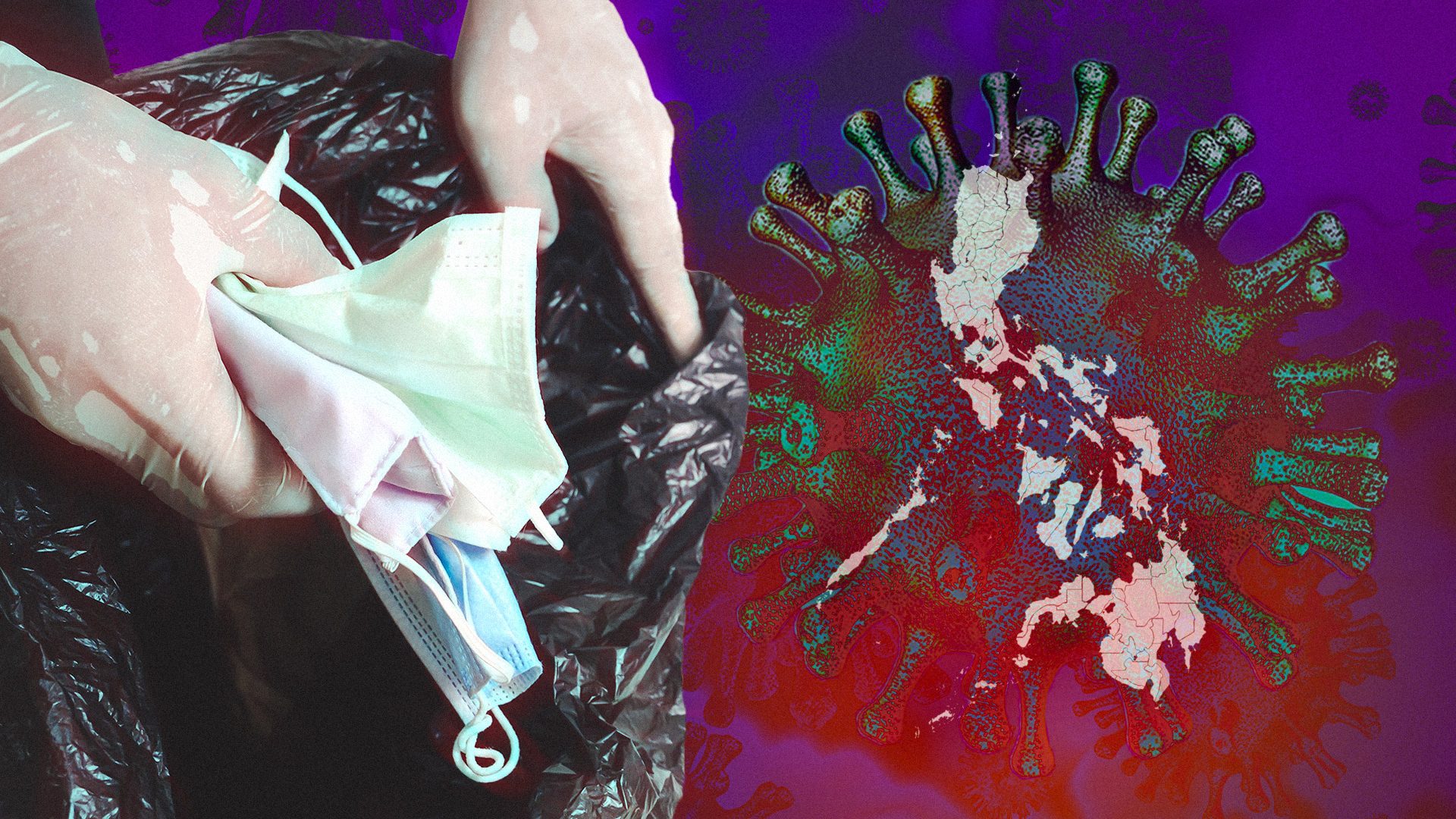
The coronavirus pandemic has penetrated Filipinos’ everyday life, affecting not just the country’s healthcare system but even waste management especially at the local level.
Already overburdened with COVID-19 response and containment, local governments also have to contend with managing potentially hazardous waste from quarantine facilities and households, on top of increased amounts of household waste and plastic usage during the pandemic.
Recording 14.66 million tons of trash a year, the Philippines is the 4th largest generator of solid waste among country-members of the Association of Southeast Asian Nations, according to a report by the United Nations Environment Program. The Philippines’ Environment Management Bureau projected that the country’s yearly waste may even rise to 18.05 million tons in 2020.
This figure does not yet take into account additional waste generated during the pandemic. In a study published last June in the journal Environmental Science & Technology, researchers calculated a monthly use of 129 billion face masks and 65 billion plastic gloves globally during the pandemic.
These unprecedented challenges hound local government units (LGUs), many of whom still struggle to manage plastic waste and implement the provisions of Republic Act (RA) No. 9003 or the Ecological Solid Waste Management Act of 2000 – a landmark legislation for managing waste in the country.
Under the law, LGUs must craft their own local solid waste management plan that details their framework for reusing, recycling, and composting waste in their jurisdiction. The National Solid Waste Management Commission (NSWMC) is mandated to approve and oversee the implementation of these solid waste management plans.
Almost 20 years after the law was passed, only 62% or 1,005 out of 1,634 LGUs in the Philippines have an NSWMC-approved 10-year solid waste management plan as of November 2020. Many are still in the throes of getting their plan approved due to limited funds, space availability, and resources.
Efforts of 3 LGUs
It does not help that many LGUs have long been struggling to manage single-use plastic. Even before the pandemic, plastic waste already took up a huge chunk of the garbage being collected from households and businesses, despite regulations imposed by LGUs.
The increasing waste brought by the pandemic has pushed several local governments, including Libmanan in Camarines Sur, the province of Siquijor, and Cebu City, to call on the NSWMC to ban the nationwide production, distribution, and trade of single-use plastics, in a bid to lessen the waste being produced in localities.
In its March 4 resolution to the NSWMC, Cebu City especially cited how the “sheer volume of single-use plastics is beyond the capacity of local governments to handle and manage.”
As of December, at least 37 local governments have passed resolutions urging the NSWMC to include single-use plastics in the list of non-environmentally acceptable products and packaging (NEAPP).
This is a huge leap, as the movement, led by Oceana, started with only the province of Cebu and 4 other cities and municipalities when the Philippines began community quarantine in March.
Under the law, the NSWMC is required to create and regularly update a list of NEAPP that will be banned in the Philippines. But environmental groups such as Oceana and Ecowaste Coalition said almost two decades since the law was passed, the NSWMC has yet to do this.
The NSWMC did, however, ban in February the use of “unnecessary single-use plastics” in national government agencies, LGUs, and other agencies.
Although the NSWMC acknowledged plastic cups and straws, among other items, as “unnecessary single-use plastics,” these are not yet banned at the national level nor included in the NEAPP list.
No to single-use plastic
Oceana vice president Gloria Estenzo Ramos said the inclusion of single-use plastic in the NEAPP list will “right away change the mindset and design for production, for what [businesses] are going to do, or the services they’re offering.”
Once included, commercial establishments will no longer be able to sell products placed, wrapped, or packaged in single-use plastic.
This can pave the way for the Philippines to drastically reduce its plastic waste, as manufacturers play a big role in plastic waste production. A 2019 report by the Global Alliance for Incinerator Alternatives Asia Pacific found that Filipinos use more than 163 million plastic sachet packets daily, or nearly 60 billion sachets a year.
“All that we see in sari-sari stores came from the manufacturers. The private sector has a big role to play in solid waste management. They should create packaging materials that can be managed by the LGUs, because right now, the packaging materials they’re creating cannot be managed,” said Ecowaste Coalition national coordinator Aileen Lucero.
Even without the NEAPP list, several LGUs have passed their own measures to regulate single-use plastics in their jurisdiction.
In Cebu City, the ban only covers the use of plastic bags on Wednesdays, Fridays, and Saturdays, as well as the use of plastic and styrofoam in events.
Siquijor has stronger plastic use regulation and prohibitions, banning plastic bags all days of the week and the selling of styrofoam and other single-use plastic containers.
As for Libmanan in Camarines Sur, it was only in September when the municipality passed an ordinance on a gradual ban on plastic. Under the ordinance, Libmanan will first observe a plastic-free day for 3 months, then totally ban the bringing and selling of plastic bags and other single-use plastic containers in the town after 6 months.
Jigo Dacua, head of Cebu City’s Department of Public Service (DPS) said that while local plastic bans help in curbing waste, local governments still end up having to process a lot of plastic because of the sachet culture in the Philippines.
“It’s great that LGUs have the initiative to ban single-use plastic, but they would be the first to tell you that it’s impossible to go zero-waste because single-use plastic is not [completely] banned [in production],” Ramos said in a mix of English and Filipino.
Lacking equipment, expertise
Having a strong solid waste management plan in place is especially important during a pandemic because it not only helps lessen people’s impact on the environment but also ensures the safety of the community.
As it is, many LGUs still don’t have sufficient equipment and expertise to handle hazardous waste – waste that may pose a substantial threat to human health or the environment when improperly managed, such as used face masks.
This was especially seen in Cebu City, which was once regarded as the Philippines’ COVID-19 epicenter. To stem the rise of COVID-19, Cebu City established barangay isolation centers in 50 out of its 80 barangays, according to Dacua.
Throughout the pandemic, however, local garbage collectors have been struggling to collect waste from these barangay isolation centers, lockdown areas, and quarantine facilities since the waste may be potentially infected with the coronavirus.
To protect their ranks, the LGU automatically considers waste from these areas as hazardous, in accordance with an NSWMC resolution released in April.
But according to Dacua, the department doesn’t have sufficient equipment to collect hazardous waste. LGUs usually hire private contractors to collect hazardous waste commonly generated in hospitals and similar establishments.
Since assumed hazardous waste from isolation centers are not part of their contractor’s coverage, the DPS has taken the initiative to collect the waste themselves, dedicating specific compactor trucks and workers for it.
“Nobody collects the assumed infectious waste, so we took the initiative…. Of course, we provide PPE (personal protective equipment) and other items to protect our men. The challenge now is, our resources are not infinite. That’s the biggest challenge: the expertise on how to collect hazardous waste, and the lack of necessary equipment or PPE to protect [our men],” Dacua said in a mix of English and Filipino.
The pandemic also emphasized how many people still don’t segregate, adding more work for LGUs and making it difficult for them to identify potentially hazardous waste.
Educating residents
Cle Bern Paglinawan, a provincial tourism and environment officer in Siquijor, said that the province struggles to segregate its waste coming from quarantine facilities since the people staying there do not practice it.
Siquijor was coronavirus-free until it reported its first two cases in August. As of November 23, the province has 10 active cases.
The province has so far been collecting trash, disinfecting them, and letting them sit in a storage area for a month before sorting the materials out for proper segregation, according to Paglinawan.
In Libmanan, the Municipal Environment and Natural Resources Office (MENRO) has been pushing for the strict enforcement of segregation especially during the pandemic, calling on barangay captains to remind residents to practice segregation and urging garbage collectors not to pick up non-segregated waste.
According to Alma Prado, the designated head of Libmanan’s MENRO, the town’s infectious waste is usually disinfected before it is thrown in a septic vault at the municipal health center. Camarines Sur has less than 100 active COVID-19 cases as of November 30.
But Rodolfo Ruel Jimenez, a councilor who has authored environment-related ordinances in Libmanan, lamented that because unsegregated trash was not being collected, some residents resorted to throwing their trash and single-use plastic instead near the Libmanan River.
Instances like this highlight the need for LGUs to educate their residents about solid waste management.
Cebu City so far has an Anti-Basura Action Team dedicated to ensuring that segregation is being practiced in the city. In Libmanan, local officials play in barangays a recording that explains the prohibited acts and penalties under RA 9003, among others.
“It’s really important for the community to take active participation, especially in the segregation process. If not, it will be really difficult for the LGU to implement, strictly follow the protocols of the ecological solid waste and the 10-year solid waste plan. It’s really important for the community, the constituents, and the government to harmonize pertaining to solid waste,” Dacua said.
Drop in trash volume?
Garbage collectors in Libmanan typically only collect soiled plastic and other items that cannot be upcycled for waste management. Plastic and biodegradable waste are set aside in the town’s material recovery and composting facilities.
This has led to a drop in the volume of trash that the municipality is collecting. Because of segregation, Prado said Libmanan has reduced its collection of daily trash from 3.5 truckloads in 2019 to just one truckload by January 2020.
Prado said the municipality also encourages residents to exchange their plastic waste with a kilogram of rice at Libmanan’s environment office so that the plastic can be upcycled into hollow blocks.
Lucero, however, said this practice may not be sustainable as it still encourages people to buy plastic. Lucero noted in particular that ecobricks and the items made from them are just “stopgap” measures, as these may eventually erode due to exposure to sun and rain.
“Manufacturers think of a lot of ways to proceed business as usual and make you buy without tapping the real source of the problem…. You have to solve plastic pollution by treating it from the source. No false solutions, no stopgap solutions – you have to do your part,” Lucero said in a mix of English and Filipino.
Local officials in Libmanan and Cebu City partly attribute the drop in the volume of their trash to the limited operations of businesses during the pandemic.
Since lockdowns began in March, Cebu City has gone from generating as much as 650 tons of trash a day to at least 400 tons, as commercial establishments were generating less waste than usual during the pandemic.
“Plastic contributes at least 30% to the total waste. Now we have masks, gloves, PPE, which contributed to at least 5% in Cebu City. During the pandemic, the waste that has been generated in the city mostly came from households, especially during enhanced community quarantine when establishments closed. Households’ biodegradable waste ballooned up to 70%,” Dacua said.
“I think if we go normal again [when] business establishments [fully open], I think we’ll go back to the 600 to 650 tons daily,” he added.
Paglinawan, meanwhile, said Siquijor saw a decrease in trash volume after the province halted the entry of tourists in the area since March.
Making it last
With no approved 10-year solid waste management plans in place, many LGUs still don’t have sanitary landfills and facilities that will allow them to recycle or dispose of waste in a sustainable manner.
A 2016 report by German consultancy firm GVM said that in the Philippines, only 15% of waste at the municipal level is properly disposed of, while only 5% is recycled. Most LGUs have not yet institutionalized recycling practices at the ground level.
According to WWF Philippines, there are only 10,730 materials recovery facilities in the country as of 2018. They cater to a meager 33.3%, or 14,000 out of the total 42,046 barangays in the Philippines.
Siquijor, Cebu City, and Libmanan are all still in the process of having their 10-year solid waste management plans approved by the NSWMC.
Over the years, local officials in the 3 LGUs had to deal with various leadership changes and leaders’ shifting priorities.
Libmanan, for instance, is still in the process of establishing its MENRO, which oversees solid waste management in the municipality. Since it’s not yet a separate office from the mayor, the Libmanan MENRO only has two permanent staff and a designated head who also juggles tasks for another office.
Although Prado is the designated head of the Libmanan MENRO, she’s also a regular staffer at the Libmanan Municipal Planning and Development Coordinators Office.
Prado said that the lack of institutionalization makes it difficult for the MENRO to make sustainable programs since they have a limited staff and budget. Prado added that due to the change in leadership, their machines for processing waste stayed idle for almost two years.
Although the Sangguniang Bayan has already moved to institutionalize the office and even allot a budget for it, Prado said the Libmanan MENRO is still waiting for the appointment of staff from the mayor.
But this process has been delayed, no thanks to the pandemic.
“‘Yung focus namin, especially our chief executive, doon na [sa] COVID-19, although meron kaming budget na naka-allocate…. Mobility and other programs ay na-delay due to COVID-19. Even ‘yung ibang fund namin, na-realign. ‘Yung sa [MENRO] naman, hindi nagalaw ‘yung fund,” said Jimenez.
(Our focus, especially our chief executive’s, is on COVID-19, although we have allocated a budget for the MENRO. Mobility and other programs have been delayed due to COVID-19. Even our other funds got realigned, although MENRO’s budget was not touched.)
Prado added that LGUs can fast-track the creation of their solid waste management plans if more support is given to them by the NSWMC and other government agencies.
“Ang pinaka na hirap-hirap talaga ng city hall iyong makapag-serbisyo ng sanitary landfill kasi masyadong magastos…. P200 million ang ma-invest para makapag-operate ng sanitary landfill. Hindi naman ganoong kayayaman iyong mga LGUs para makapag-establish ng sanitary landfill pero pinipiga na…. Hindi pa rin kakayanin,” she said.
(What’s difficult for the city hall is to establish a sanitary landfill since it’s too expensive…. P200 million has to be invested to operate a sanitary landfill. LGUs are not that rich that we can easily establish that, but we’re being wrung out…. We won’t be able to do it.)
Siquijor and Cebu City also faced similar challenges. Dacua shared that there was no proper turnover when a new mayor took office in Cebu City, which resulted in local officials struggling to get from the previous administration documents and data needed to complete the city’s 10-year solid waste management plan.
In Siquijor, whether or not solid waste management would be prioritized depends on who’s seated in office, according to Paglinawan.
In fact, the province only recently started crafting its 10-year plan. With Siquijor towns anchoring their own 10-year plans on the province having its own sanitary landfill, Paglinawan is already looking for a location that meets the requirements.
Beyond segregation
With many LGUs still trying to get their 10-year solid waste management plans approved, mere segregation will not be enough for local governments to handle the waste during the pandemic. More can still be done to address the Philippines’ garbage problem.
Several LGUs, through their resolutions sent to NSWMC, have reiterated the need to include single-use plastic in the NEAPP list and stop the waste problem at its source. Cebu City’s local legislative body, in their resolution, even called plastic the “greatest obstacle to sound waste and resource management.”
Dacua said the ban on the production, selling, and use of single-use plastic can help LGUs save up and direct more funds to the delivery of services for their constituents.
“There are a lot of people and organizations lobbying for [inclusion of single-use plastic in NEAPP list]. I am really grateful personally because it really helps a lot…. We pay by volume. If we can only ban [single-use plastic], then we can already save 30% of the total volume we have in Cebu City every day. That’s a lot of money to save,” he said.
“[NSWMC] could choose to be powerful, but it chose to be passive…. May the political will of the Commission be harnessed to reduce the plastic menace from the source,” Ramos added.
But with no list to depend on, many local government units will have to trudge on for now with the heavy burden of finding ways to manage waste on top of responding to the COVID-19 pandemic. – with a report from Iya Gozum/Rappler.com
This story was produced in partnership with Oceana.
Add a comment
How does this make you feel?






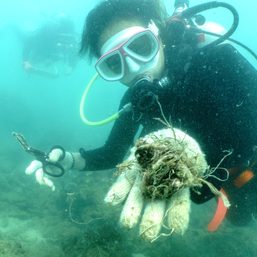
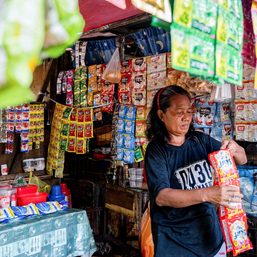
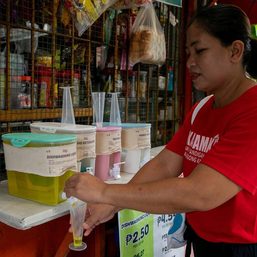
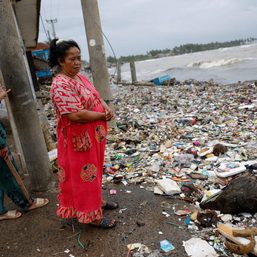
There are no comments yet. Add your comment to start the conversation.